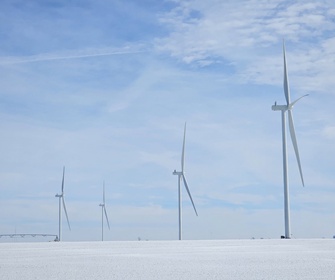Rapid growth in variable renewables will lead to much greater volatility in the power system, challenging inflexible ‘baseload’ generators and creating opportunities for new flexible sources. The research shows that while there will be a significant increase in the amount of variable renewables on the system, the total back-up capacity needed by 2040 in the UK and Germany will be much the same as in 2017. These findings are part of an economic study released by Bloomberg New Energy Finance (BNEF) and commissioned by Eaton in partnership with the Renewable Energy Association (REA).
The study – ‘Beyond the tipping point: flexibility gaps in future high-renewable energy systems in the UK, Germany and the Nordics’ – highlights that future energy systems in the UK and Germany with very high levels of variable renewable generation must be complemented by flexible resources, including energy storage.
With more renewable supply comes more curtailment, but not to significant levels: in 2030, less than 1% of UK and 3% of German wind and solar generation is curtailed or ‘wasted’ due to oversupply. By 2040, this rises to 3% and 16% respectively. Increased wind and solar generation results in more variable demand for other energy sources to plug power supply gaps. In this environment, flexible power technologies such as energy storage and gas generators will have an advantage. In addition, certain types of demand response such as flexible electric vehicle charging and variable industrial loads can respond quickly to conditions on the grid, or shift or consume surplus renewable energy. As early as 2030, there will be whole weeks where wind and solar power generation exceed total demand at some point every day. This creates a very challenging environment for ‘baseload’ technologies that benefit from running at a constant stable output, such as nuclear, coal and lignite. However, even in the 2040 scenarios, there will be some weeks and months where generation other than wind and solar must be called upon to meet the majority of demand. Such long ‘gaps’ cannot be filled with demand response and current energy storage technologies. A fleet of flexible resources will need to be maintained to meet these gaps, including gas generation, interconnectors and dispatchable renewable technologies such as bioenergy. In future, long-term storage solutions such as hydrogen may come into play too.
The Nordic energy system, with its large hydropower capacity, can add renewables without struggling with the seasonal gaps and increased volatility associated with wind and solar in other markets. Furthermore, it will have substantial spare flexibility available for export via interconnectors to support the high-variable renewables British and German markets. Due to low wind and solar penetration, the Nordics do not experience significant growth in system volatility. Because hydropower is so dominant in the Nordics (mostly produced in Norway and Sweden), a 78% renewable (11% solar and wind) scenario in 2040 is achieved without introducing large amounts of volatility or curtailment. There is still room for baseload resources that are always on. The hydrological cycle in the Nordics is such that water inflow is at its lowest during winter, when water is mostly frozen, and at its highest during spring and summer, when snow melts. The opposite is true of wind power, which is higher over the winter when demand is high and lower over the summer. The complementary nature of wind and hydro makes wind a good fit for the Nordic power system.








